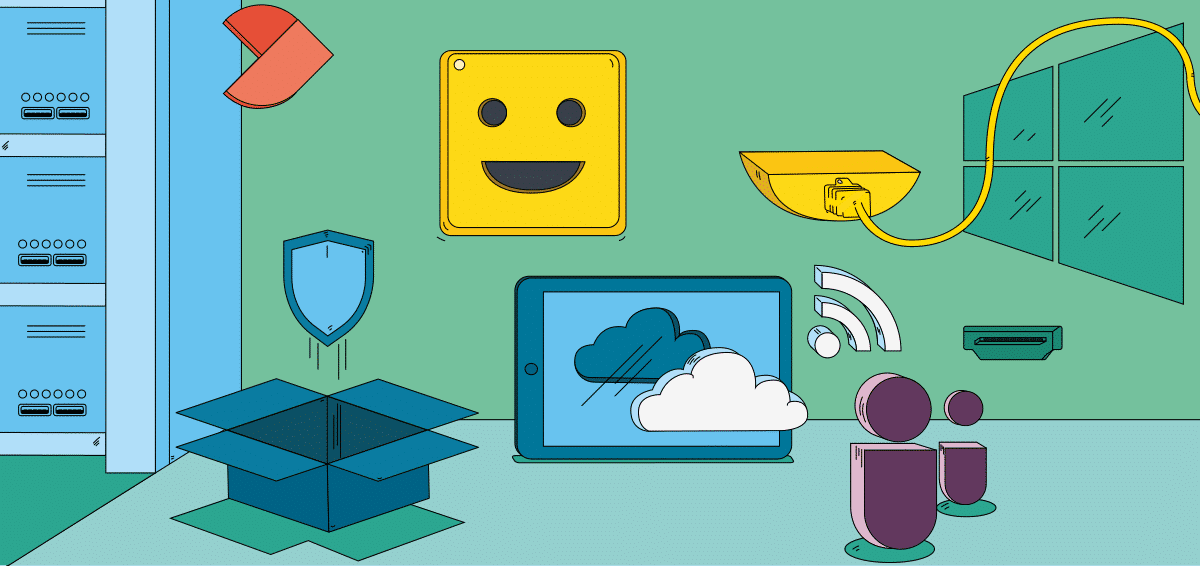ITAM vs ITSM – how they differ and complement each other

Industry expert Stephen Mann introduces the first blog in a series all about IT management capabilities that complement IT Service Management (ITSM). He’ll explore what IT Asset Management (ITAM) is, how it compares to (and differs from) ITSM, and how they complement each other.
As an IT management professional, you might find this blog’s title a little confusing – shouldn’t it be ITAM and ITSM, not ITAM vs ITSM? The reason why I use “ITSM vs ITAM” is that this blog compares and contrasts the two IT management capabilities. They definitely aren’t competing approaches, although the reality is that – like any other business priorities – they might go head-to-head when it comes to the annual budgeting process, the allocation of IT staff, and investment priorities.
If you’re looking to understand more about the differences between ITAM and ITSM, and why they need to work better together, then please keep on reading.
What is ITAM?
ITAM is a set of business processes designed to manage the lifecycle and inventory of an organization’s IT assets. What is an IT asset? This includes all elements of software and hardware that you generally find in a business environment.
“Accounting for, and effectively managing, all IT assets throughout their life cycle from procurement to disposal.”
Fundamentally, this hasn’t changed. And the latest ITIL 4 ITSM guidance now also includes ITAM, defining it as: “The purpose of the IT asset management practice is to plan and manage the full lifecycle of all IT assets, to help the organization: maximize value; control costs; manage risks; support decision-making about purchase, re-use, retirement, and disposal of assets; and meet regulatory and contractual requirements.”
A key thing to remember is that ITAM and ITSM have similar purposes in terms of end goals and outcomes, but the respective bodies of best practices have traditionally been separate.
How does ITAM relate to ITSM?
Before we look at ITSM vs ITAM, we need to look more closely at ITSM itself. After all, not everyone knows what ITSM is. If you do, feel free to skip this part.
My definition of ITSM is “improving business performance through better IT delivery.” This is a little different from the ITIL 4 definition which has – quite rightly – turned up the focus on value-creation (or co-creation) in its generic service management definition: “A set of specialized organizational capabilities for enabling value for customers in the form of services.”
A key thing to remember is that ITAM and ITSM have similar purposes in terms of end goals and outcomes, but the respective bodies of best practices have traditionally been separate. Why? Well, IT assets have always been seen as “things” to be “counted and controlled,” whereas with IT services, the main focus has always been on the quality of service delivery and support.
That said, there has always been some overlap between ITAM and ITSM given that IT assets are employed in the delivery of IT services. Some IT services might now be also managed as IT assets (and vice-versa). Consider cloud services, for example. I believe this is the main reason why ITAM has now been brought into the ITIL 4 ITSM best practice guidance as a concept in its own right, being defined as: “The practice of planning and managing the full lifecycle of all IT assets.”
The difference between ITAM vs. ITSM
Let’s start with the obvious difference: the most popular versions of best practice guidance for ITAM and ITSM have been created by different and unconnected parties. What’s more, organizations that have adopted both IT management disciplines may keep them entirely separated in two ecosystems: one focused on assets, and the other focused on services (but both hopefully focused on improving overall business operations and outcomes).
Another major difference between the two is that IT assets are, generally speaking, different from IT services. In many ways, this is a no-brainer. Providing a managed desktop service is completely different to (and better than) simply providing a desktop PC. Some have also argued that assets are used whereas services are consumed, but to be honest, I think this is purely a semantic differentiator.
There’s one key word that always springs to mind: tangible. IT assets are tangible, physical things – you can hold an asset in your hand. Services, on the other hand, are less tangible (even though they still rely upon physical assets to complete their objective). Going back to the previous example of a managed desktop service, this consists of multiple physical assets: a PC, the operating system software, and personal productivity software (or a cloud-delivered service).
These are all IT assets that need to be managed, yet they’re bundled together and delivered as a service. They might even be bundled up with other services, like a network or connectivity service, an email service, an antivirus service, internet service, and so on. Again, all of these employ some form of hardware, software, and service-based assets.
How ITAM and ITSM complement each other
In reality, there’s no need to think of ITSM and ITAM as being in direct competition – instead, they complement one another. After all, you can’t have IT services without IT assets.
However:
Service configuration management (the ITIL 4 name for configuration management) is widely used to help organizations identify which configuration items are used in the creation and delivery of IT services. Given that this already facilitates incident management, change management (which is now change enablement in ITIL 4), problem management, and other ITSM practices, do organizations even need ITAM in the first place?
Before you go ahead and dismiss ITAM entirely, it’s worth remembering that service configuration management and ITAM aren’t the same thing – they don’t offer the same capabilities and outcomes. But let’s park this for now and come back to ITAM vs ITSM’s service configuration management practices.
As already mentioned, ITAM has traditionally focused on “counting and control.” For more mature organizations, it has generally centered around optimizing the use of IT assets and their associated costs – like making sure that existing software assets are being used to create optimal value for the organization (as well as meeting licensing compliance needs). In many ways, ITAM is about governance. But then again, so is ITSM. So while they may appear to be two separate schools of IT management, they have similar aims: ensuring that the corporate investment in technology is best meeting the needs of the organization.
Indeed, not only are they similar in their aims, but they also greatly enable each other beyond simply the provision of IT asset information to other ITSM practices (as mentioned above). It’s clear that the absence of one can – and will – adversely affect the other. For example, ITSM requires effective financial stewardship, but this can’t be met fully without ITAM (in other words, effectively managing IT asset costs).
Again, some might reference the significant overlap between ITAM and configuration management capabilities here – but where’s the configuration management guidance on cost optimization in ITIL 4? It’s in the ITAM practice guidance. And, conversely, ITAM activities are greatly aided when the IT service desk (on the ITSM side of things) has formal, optimized processes for the provision and removal of IT assets (like hardware, software, and services). ITAM and ITSM are not only similar but, in many cases, they work best when used in conjunction with one another.
I could keep on going here, but you can hopefully see that ITAM and ITSM have much in common despite their differences.
ITAM vs ITSM’s service configuration management
I was once told something along the lines of “ITAM is both deeper and broader than configuration management”, which I think is a pretty helpful explanation. This is backed up by the latest ITIL 4 guidance which states that: “The purpose of the service configuration management practice is to ensure that accurate and reliable information about the configuration of services, and the configuration items (CIs) that support them, is available when and where it is needed. This includes information on how CIs are configured and the relationships between them.”
This might sound a little like ITAM but, if you read it carefully, it’s about relationships and configurations. This is definitely not as deep and broad as the earlier ITIL 4 ITAM purpose that included value maximization, cost control, risk management, decision-making support, and meeting regulatory and contractual requirements.
So, ask yourself – do your configuration management capabilities do all this? If not, then you likely need ITAM within your organization.
Hopefully, this blog has shed light on some of the “ITAM vs ITSM” questions that you might have. If there’s anything I’ve missed, then please drop me a comment.
Inspire others, share this blog



